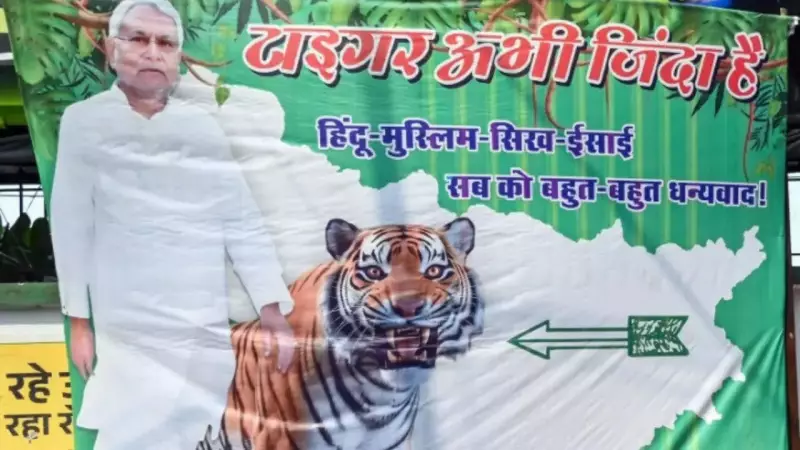
In a remarkable political turnaround, Janata Dal (United) chief Nitish Kumar has defied all predictions to lead his party to a spectacular victory in the Bihar 2025 assembly elections. The septuagenarian leader, who faced intense scrutiny and criticism in the run-up to the polls, has proven his enduring political relevance by nearly doubling his party's seat count.
The Tiger Roars Again: JD(U)'s Spectacular Comeback
The JD(U), which had managed to secure only 43 assembly seats in the previous elections five years back, has made massive gains by winning 85 seats this time. This impressive performance makes JD(U) the second largest party in the state assembly, marking one of the most significant political comebacks in recent Bihar history.
The election campaign saw Nitish Kumar facing multiple challenges from all sides. Opposition leaders, including RJD's Tejashwi Yadav, had questioned his mental health and governing capabilities, while Jan Suraj chief Prashant Kishor repeatedly asserted that JD(U) would not cross 25 seats. Even within the NDA alliance, the BJP had declined to project Nitish as the chief ministerial candidate before the elections, creating additional pressure.
Overcoming Political Hurdles
Nitish Kumar navigated several critical obstacles during the election campaign. Anti-incumbency posed a significant challenge after 20 years of his rule, while he also had to counter the influence of his political rival Chirag Paswan, who had been openly critical of the law and order situation in Bihar.
When it came to seat sharing negotiations within the NDA, Nitish found himself in a delicate position. The BJP's announcement that the alliance leader would be decided by legislators after results added uncertainty to his political future.
Women Voters: The Silent Force Behind Victory
Undeterred by these pressures, Nitish Kumar focused relentlessly on his development agenda and strategically cultivated his core support base. Women voters emerged as the silent force behind JD(U)'s impressive performance, with the party announcing several schemes and enhancing cash components of existing welfare programs specifically targeting female voters.
The central government's initiative to provide Rs 10,000 to 72 lakh women across Bihar further strengthened Nitish's appeal among this crucial demographic. This focused approach to women's welfare likely played a decisive role in JD(U)'s electoral success.
The Road Ahead: Chief Ministerial Dilemma
Despite his party's spectacular performance, Nitish Kumar faces an uncertain path to the chief minister's chair. The BJP has outperformed JD(U) by increasing its tally to 92 seats, while smaller NDA allies together won 27 seats. This means the NDA alliance can reach the majority mark of 122 seats even without JD(U)'s support.
However, JD(U)'s support remains crucial for the BJP at the central government level, which means the final decision on Bihar's next chief minister will involve intense negotiations between both parties. The political bargaining that follows this election result will determine whether the 'tiger' that proved its strength in the electoral battle will get to lead the government it helped secure.
The election results have conclusively demonstrated that reports of Nitish Kumar's political demise were greatly exaggerated. As the poster featuring him standing beside a tiger with the caption 'tiger abhi zinda hai' (the tiger is still alive) proclaimed during the campaign, Nitish Kumar has once again proven his mastery over Bihar's complex political landscape.





